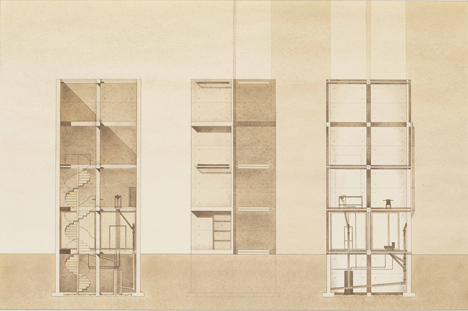Vertical Glass House by Atelier FCJZ has glass floors instead of windows
Glass floors allow residents to look down from a dining table into a toilet inside this windowless concrete house in Shanghai by Chinese firm Atelier FCJZ (+ slideshow).
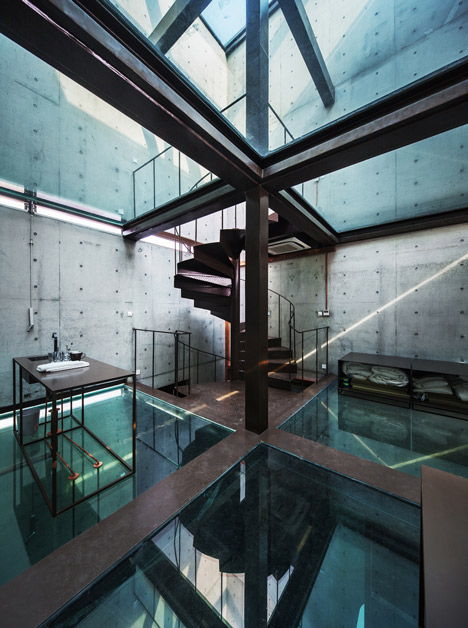
Yung Ho Chang of Atelier FCJZ originally designed the Vertical Glass House as an urban housing prototype for a competition in 1991. Twenty-two years later, the studio was able to realise the project as part of the West Bund Biennale of Architecture and Contemporary Art.
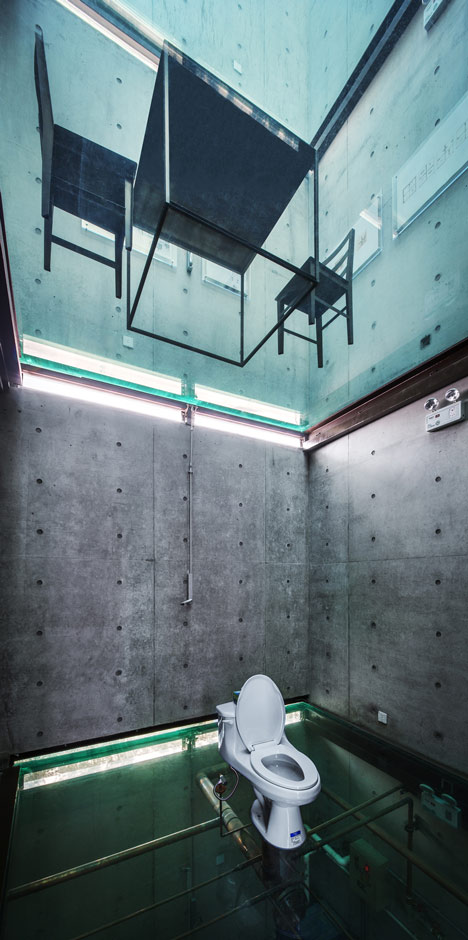
The building now functions as a guesthouse for visiting artists and architects. Closely based on the original design, the four-storey house has a glass roof and glass floors between each level, meaning that residents can look all the way up from the basement to the sky.
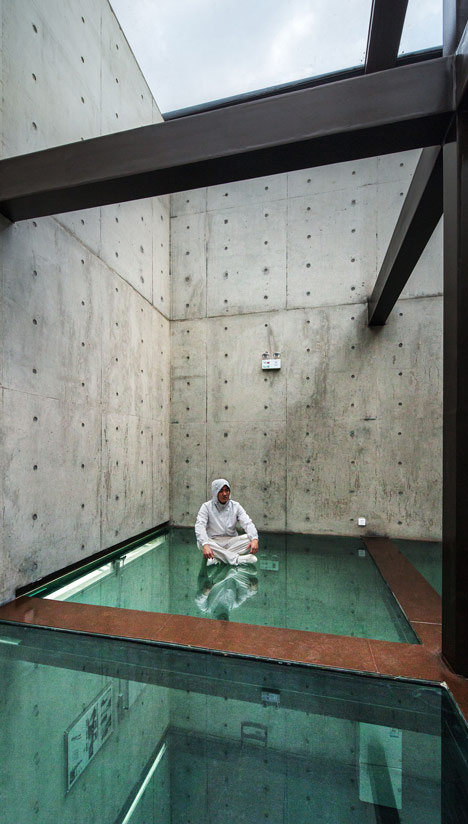
According to project architect Lu Bai, the house is a 90-degree rotation of the typical glass houses completed during the Modernist period, placing more of an emphasis on spirituality and materials.
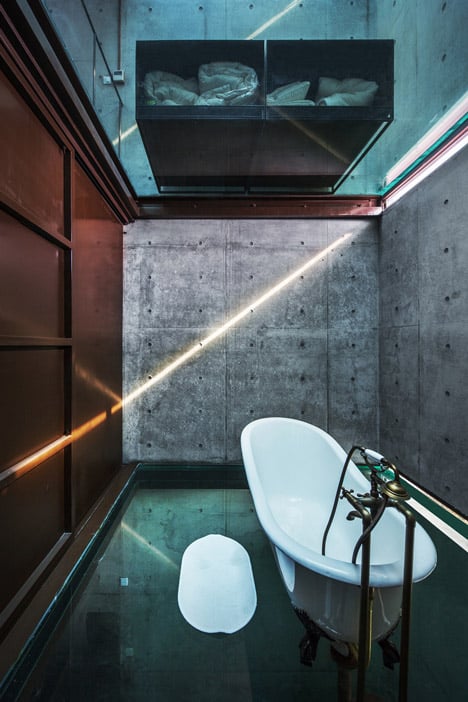
"With enclosed walls and transparent floors as well as roof, the house opens to the sky and the earth, positions the inhabitant right in the middle, and creates a place for meditation," he explained.
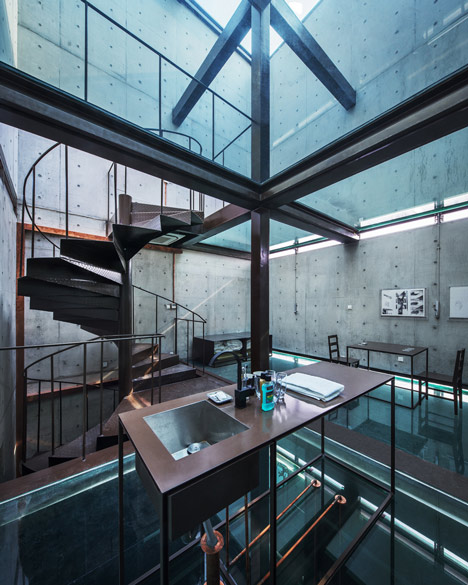
A single steel column extends up through the exact centre of the building. Together with a series of criss-crossing joists, it dissects the floors into quarters that each accommodate different activities.
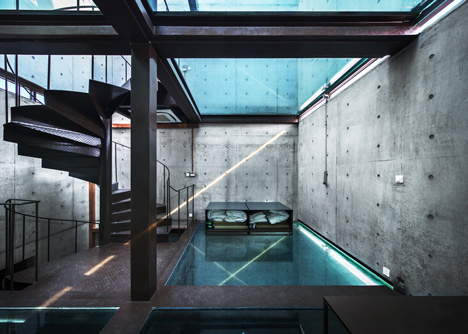
On each floor, one of these quarters is taken up by a steel staircase that spirals down to the basement from a double-height second floor.
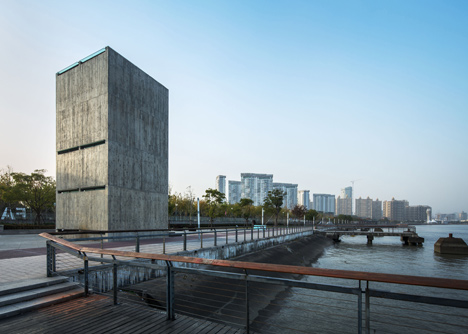
The house's austere concrete walls were cast against wooden formwork, which was left rough on the outside and sanded on the inside to give a contrast in texture between the facade and the interior walls.
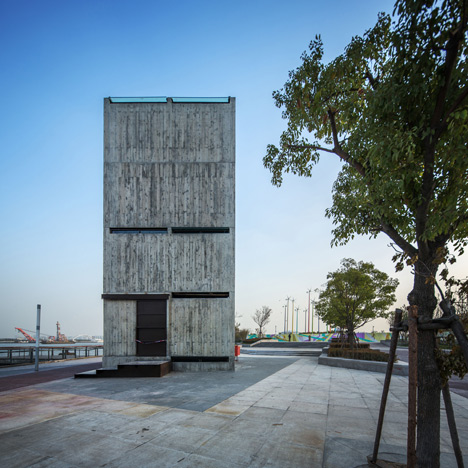
Each glass floor slots into a pair of narrow horizontal openings in the walls and the architects have added lighting along these junctions to create stripes of light on the building's facades after dark.
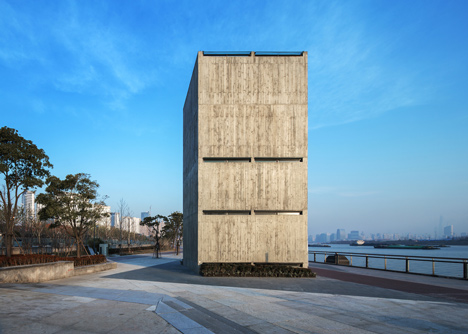
The overall footprint of the house is just 40 square metres.
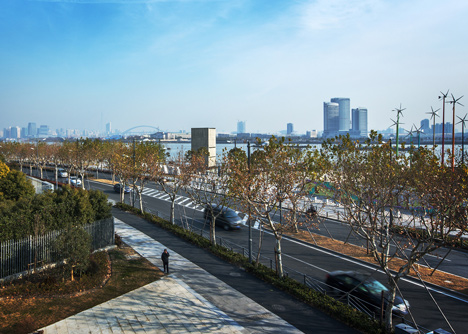
Here's a project description from Atelier FCJZ:
Vertical Glass House
Vertical Glass House was designed by Yung Ho Chang as an entry to the annual Shinkenchiku Residential Design Competition organised by the Japan Architect magazine in 1991. Chang received an Honorable Mention award for the project. Twenty-two years later in 2013, the West Bund Biennale of Architecture and Contemporary Art in Shanghai decided to build it as one of its permanent pavilions.
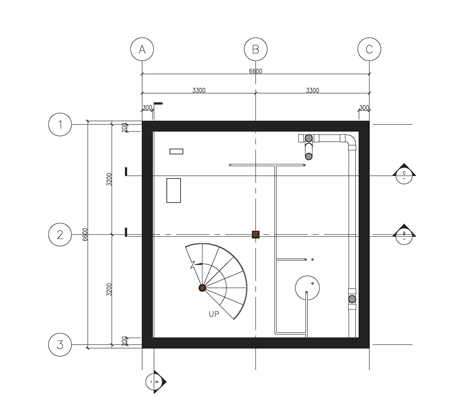
Vertical Glass House is a urban housing prototype and discusses the notion of transparency in verticality while serving as a critic of Modernist transparency in horizontality or a glass house that always opens to landscape and provides no privacy. While turning the classic glass house 90 degrees, Vertical Glass House is on one hand spiritual: with enclosed walls and transparent floors as well as roof, the house opens to the sky and the earth, positions the inhabitant right in the middle, and creates a place for meditation. On the other hand, Vertical Glass House is material: vertical transparency visually connects all the utilities, ductworks, furniture pieces on different levels, as well as the staircase, into a system of domesticity and provides another reading of the modern theory of "architecture as living machine".
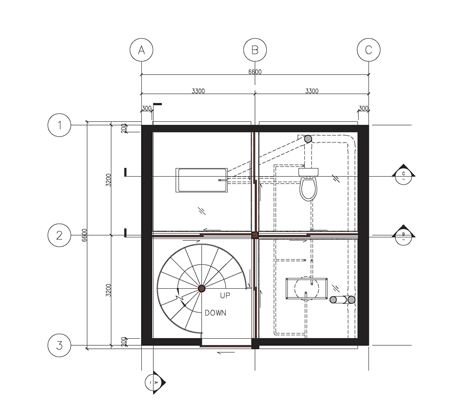
The structure erected in Shanghai in 2013 was closely based on the 22-years old design scheme by Chang and developed by the Atelier FCJZ. With a footprint of less than 40 square meters, the four-storey residence is enclosed with solid concrete walls leaving little visual connection to its immediate surrounding. The walls were cast in rough wooden formwork on the exterior and smooth boards on the interior to give a contrast in texture in surface from the inside out. Within the concrete enclosure, a singular steel post is at the centre with steel beams divide the space in quarters and frame each domestic activity along with the concrete walls.
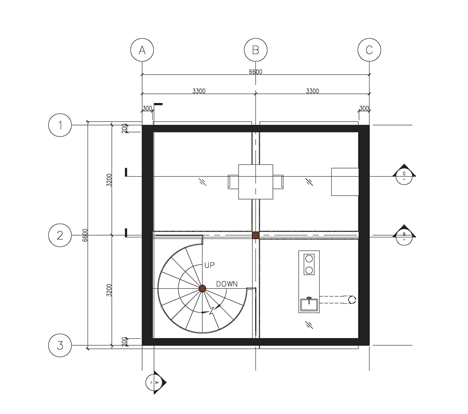
All the floor slabs for the Vertical Glass House, which consists of 7cm thick composite tempered glass slabs, cantilevers beyond the concrete shell through the horizontal slivers on the facade. The perimeter of each glass slab is lit from within the house; therefore, light transmits through the glass at night to give a sense of mystic for the pedestrians passing by. All the furniture were designed specifically for the rooms inside the Vertical Glass House to be true to the original design concept and keep a cohere appearance with its structures and stairs. Air conditioning was added to the house.
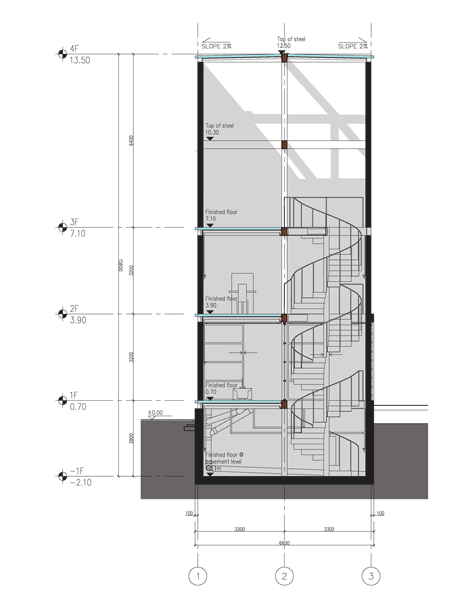
The Vertical Glass House will be operated by the West Bund Biennale as a one-room guest house for visiting artists and architects while serving as an architectural exhibition.

Office: Atelier FCJZ
Principal Architect: Yung Ho Chang
Project Architect: Lu Bai
Project Team: Li Xiang Ting, Cai Feng
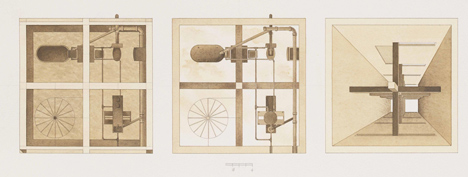
Location: Xuhui District Longteng Road, Shanghai, China
Client: West Bund
Building Area: 170 m2 Structural
Type: Housing/Exhibition
